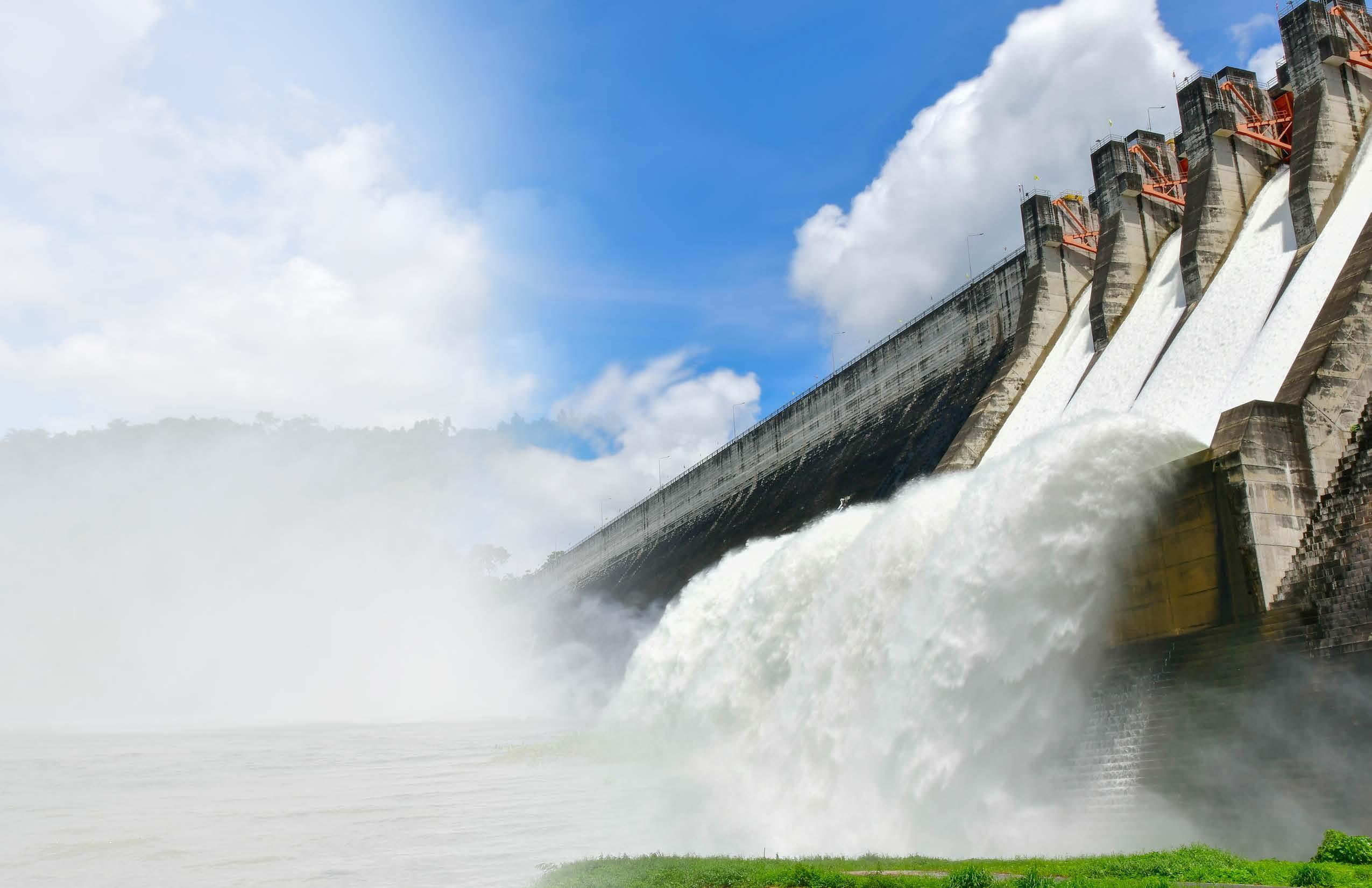
4 minute read
CURRENTS OF PROGRESS
Africa's Hydropower Epics Sparking Development
In the heart of Africa, the mighty rivers that crisscross the continent carry more than just water; they bear the promise of a transformative energy source— hydropower. This tale unfolds against the backdrop of economic aspirations, environmental consciousness, and the pursuit of a sustainable future.
A Grand Ambition in Ethiopia:
The Grand Ethiopian Renaissance Dam (GERD)
High in the Ethiopian highlands, the Blue Nile River echoes with the sounds of progress as the Grand Ethiopian Renaissance Dam (GERD) takes shape. This ambitious endeavor aspires to be Africa's largest hydropower project, heralding a new era for Ethiopia. With a staggering capacity of over 6,000 megawatts, the GERD envisions not only illuminating Ethiopian homes but also positioning the country as a major electricity exporter. However, the journey to harness the Blue Nile's power is not without its challenges, as negotiations between Ethiopia, Sudan, and Egypt navigate the complexities of water rights and downstream impacts.
Congo's Roar:
The Inga Dam Complex
In the lush basin of the Congo River, a symphony of potential surges. The Inga Dam Complex, situated in the Democratic Republic of the Congo, stands as a testament to the vast energy locked within the river's flow. The Grand Inga project, a jewel in this complex, dreams of generating over 40,000 megawatts—enough to power entire nations. The vision extends beyond borders, with the potential to light up homes not just in Africa but across continents. As engineers and visionaries collaborate, the roar of the Congo becomes a beacon for a brighter, interconnected future.
Mozambique's Hydro Elegance: Cahora Bassa Dam
In southern Africa, on the Zambezi River, the Cahora Bassa Dam graces the landscape with hydro elegance. With a capacity exceeding 2,000 megawatts, this Mozambican marvel contributes not only to the nation's energy needs but also to regional cooperation. The dam's waters not only generate electricity but also foster economic growth, supplying power to neighboring countries and integrating energy systems across borders.
Egypt's Nile Symphony:
The Aswan High Dam
Along the Nile, Egypt's ancient river of life, the Aswan High Dam stands as a testament to the synergy of water and power. Beyond its role as an electricity generator, the dam is a guardian of the Nile's flow, regulating waters for agriculture and minimizing the risk of floods. The Aswan High Dam weaves a symphony of sustainability, illustrating how hydropower can harmonize economic development with environmental stewardship.
As these stories unfold, hydropower emerges as a dynamic force shaping Africa's energy landscape. The rivers that have sustained life for millennia now become conduits for progress, powering nations, fostering regional collaboration, and illuminating a path toward a sustainable and electrified future for the continent. The journey continues, as the flow of water becomes a source not only of energy but also of hope and prosperity for generations to come.Projections for the African renewable energy landscape in 2024 suggest a dynamic and transformative trajectory. Continued growth in solar and wind capacity is anticipated, with large-scale projects in the Sahara and coastal wind farms contributing significantly to sustainable energy generation. Expectations include advancements in energy storage solutions to enhance the reliability of intermittent renewable sources.
The expansion of regional energy markets and cross-border collaborations may facilitate the sharing of resources and boost regional energy security. Projections also foresee increased investments and international partnerships, accelerating the development of renewable projects and technology transfer.
Scaling up off-grid and decentralized solutions, coupled with supportive policies and regulatory developments, is poised to address energy access challenges. Additionally, technological innovation and research efforts are likely to drive advancements, positioning Africa at the forefront of the global transition toward a cleaner and more sustainable energy future. For the most accurate insights, it is advisable to refer to recent reports from energy organizations and research institutions specializing in the African energy sector.












